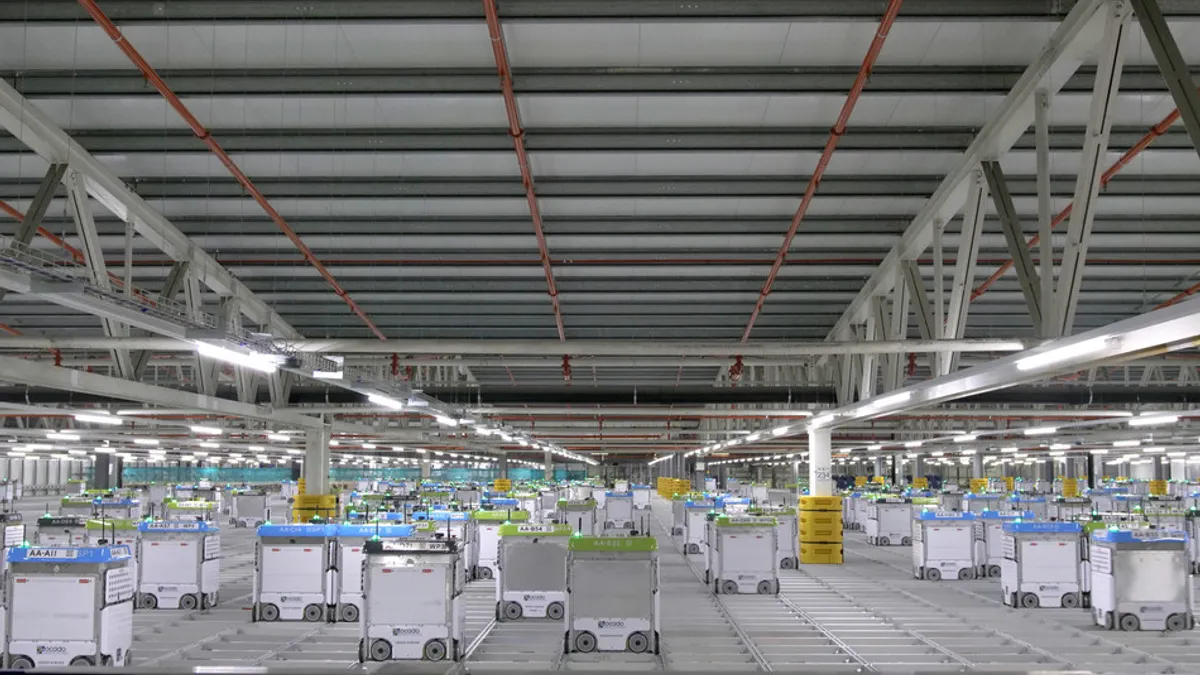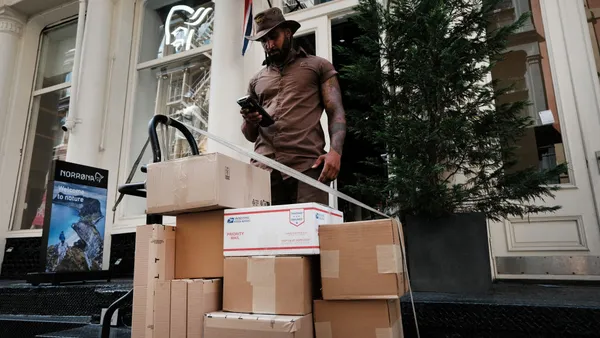Dive Brief:
- Two newly opened Florida facilities will each act as a "spoke" to facilitate Kroger Delivery, Rodney McMullen, chairman and CEO of The Kroger Company, said in an earnings call last week.
- Kroger Fulfillment Network, a subsidiary of the grocery company, opened two cross-docking facilities in Florida — one in Tampa and one in Jacksonville — in the past months, according to local media reports.
- The facilities will act as transfer points for orders that originate at the company's "hub," an automated customer fulfillment center in Groveland, Florida, but need to be delivered to customers whose home is more than 90 miles away and within 90 miles from the spokes.
Kroger Fulfillment Network deploys hub-and-spoke model to Florida
Dive Insight:
Kroger is betting its automated fulfillment centers and hub-and-spoke model will gain it a competitive advantage in Florida, but the bet has required a significant upfront investment.
Kroger estimates it will spend $100 million this year on the upfront expenses required to set up its automated facilities. That's in addition to the cost of opening two new facilities. The build-out for the Jacksonville facility alone cost $205,000, according to city records.
The grocer is using technology from Ocado to automate its fulfillment centers. The automation involves more than 1,000 robots equipped with artificial intelligence, helping to pick orders from 21 levels of crates before they are loaded onto either a delivery vehicle or a truck. Kroger and Ocado showcased the technology earlier this year, saying a "module" of robots could help prepare around 60 orders in just three minutes, Grocery Dive reported in April.
McMullen reminded investors Kroger is "very, very early in the process" of leveraging the Ocado technology during an earnings call last week. The grocer plans to open 11 fulfillment centers by the end of 2022, and its Groveland facility is the second Ocado-powered facility so far. (Kroger is already working on opening its next facility in the Washington, D.C. area, the costs for which are part of the $100 million guidance.)
"Most of the costs in the first year are going to be those sort of largely fixed costs," Gary Millerchip, senior vice president and CFO of Kroger, said on an earnings call last week.
Millerchip went into more detail on the expected ROI of this strategy at an investor's day in March.
"While Ocado will be a headwind to operating profit in the early years, as we ramp up volume in each CFC, by year three we would expect the CFC to achieve site profitability," said Millerchip. "And by year four to be at least on par with the store operating profit rate."
For many supply chains, millions of dollars in investments plus a four-year timeline to see a return can be an inhibitor to adopting new warehouse technology. In the past two years, several surveys have suggested more than a third of supply chain managers are looking to invest in warehouse robotics. Labor shortages and advances in technology are driving the interest, but cost and an unknown return on the investment are inhibitors.
But, the way Kroger looks at it, using several automated warehouses (which the grocer calls "sheds") to meet the rising demand for delivery is more efficient than investing in stores.
"The key takeaway here is basically the way that we look at it, one shed is equal to 20 stores worth of sales," Gabriel Arreaga, senior vice president of supply chain at Kroger, said during the March investor day. "Each one of those sheds only requires 60% of the capital, and they only require 60% of the labor as well."














